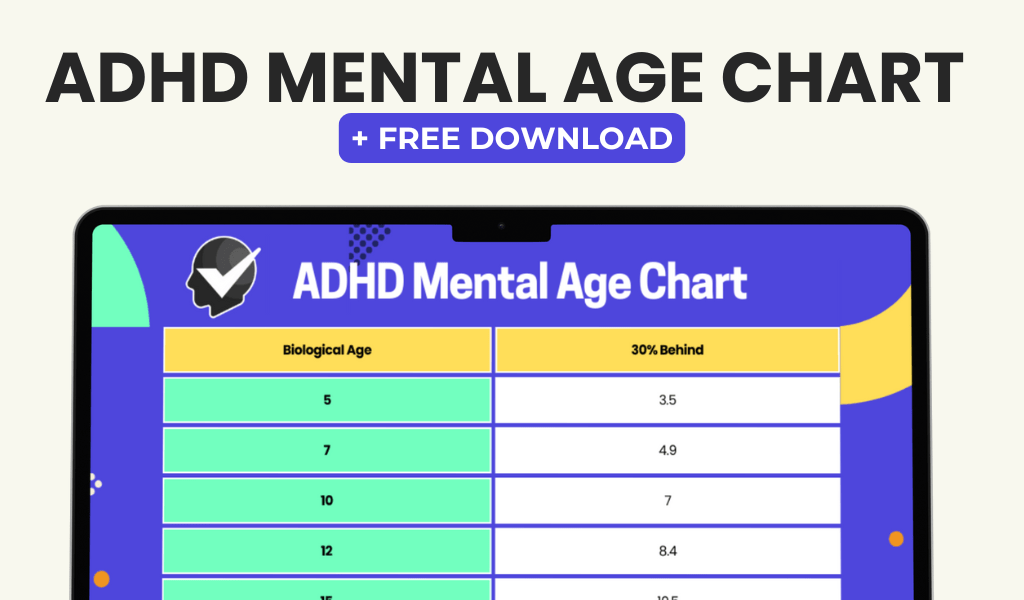ADHD (Attention Deficit Hyperactivity Disorder) and Autism Spectrum Disorders (ASD) are distinct neurodevelopmental conditions that can co-occur in some individuals. ADHD is characterized by persistent patterns of inattention, hyperactivity, and impulsivity that interfere with daily functioning and development. Symptoms typically include difficulty focusing, poor organizational skills, forgetfulness, and restlessness.
Autism Spectrum Disorders encompass a range of conditions marked by challenges in social communication, restricted interests, and repetitive behaviors. Individuals with ASD may struggle with interpreting social cues, maintaining eye contact, and engaging in reciprocal conversations. They often display intense focus on specific topics and may adhere to rigid routines.
While ADHD and ASD are separate diagnoses, they can overlap in some individuals. This co-occurrence can present unique challenges in diagnosis and treatment. Symptoms of one condition may mask or exacerbate symptoms of the other, requiring careful assessment by healthcare professionals.
Understanding the distinct features of each condition is crucial for accurate diagnosis and effective intervention. Individuals with both ADHD and ASD may require tailored support strategies that address the specific challenges associated with each disorder. This may include behavioral therapies, educational accommodations, and in some cases, medication management.
Research continues to explore the relationship between ADHD and ASD, including potential shared genetic and neurobiological factors. As understanding of these conditions grows, so does the ability to provide more targeted and effective interventions for individuals experiencing both ADHD and ASD.
Overlapping Symptoms and Behaviors
Attention and Impulsivity Challenges
Both ADHD and Autism can present with difficulties in regulating attention and impulsivity. Individuals may struggle with maintaining focus on tasks, following instructions, and controlling impulsive behaviors.
Sensory Sensitivities and Overlaps
Both conditions can be associated with sensory sensitivities, such as being over or under-sensitive to certain sounds, textures, or lights. These overlapping symptoms can make it challenging to differentiate between the two conditions and may require a comprehensive assessment by a qualified professional.
Social Interaction and Emotional Regulation Difficulties
Individuals with co-occurring ADHD and Autism may also exhibit difficulties in social interaction and communication, such as struggling with understanding social cues, initiating and maintaining conversations, and interpreting nonverbal communication. Furthermore, both conditions can be associated with difficulties in regulating emotions and managing transitions.
The Impact of Co-occurring ADHD and Autism

The co-occurrence of ADHD and Autism can have a significant impact on an individual’s daily functioning and overall well-being. For example, individuals with both conditions may experience heightened levels of anxiety and stress due to the challenges they face in social situations, academic settings, or work environments. They may also struggle with maintaining relationships and forming connections with others, which can lead to feelings of isolation and loneliness.
Additionally, the co-occurrence of ADHD and Autism can impact an individual’s ability to engage in activities of daily living, such as self-care, time management, and organization. Furthermore, the impact of co-occurring ADHD and Autism extends beyond the individual to their family members and caregivers. Families may experience increased stress and frustration in supporting their loved one with complex needs.
They may also face challenges in accessing appropriate services and resources to address the unique needs of their family member. Understanding the impact of co-occurring ADHD and Autism is essential in providing comprehensive support and intervention for individuals and their families.
Challenges in Diagnosis and Treatment
One of the primary challenges in addressing co-occurring ADHD and Autism is the complexity of diagnosis. The overlapping symptoms and behaviors of both conditions can make it difficult to differentiate between them, leading to potential misdiagnosis or underdiagnosis. Additionally, individuals with co-occurring ADHD and Autism may present with unique profiles that do not fit neatly into existing diagnostic criteria.
This can result in delays in receiving appropriate support and intervention. Furthermore, the co-occurrence of ADHD and Autism can present challenges in treatment planning. Traditional interventions for ADHD, such as medication management and behavioral therapy, may not fully address the unique needs of individuals with co-occurring Autism.
Similarly, interventions for Autism, such as social skills training and sensory integration therapy, may not fully address the attention and impulsivity challenges associated with ADHD. Addressing the complex needs of individuals with co-occurring ADHD and Autism requires a comprehensive approach that takes into account the unique features of each condition.
ADHD Testing and Screening for Autism Spectrum Disorders
When assessing individuals for ADHD, it is important to consider the potential presence of co-occurring Autism Spectrum Disorders. This may involve using screening tools specifically designed to assess for symptoms of Autism, such as the Modified Checklist for Autism in Toddlers (M-CHAT) or the Social Communication Questionnaire (SCQ). These screening tools can help identify individuals who may benefit from a more comprehensive assessment for Autism Spectrum Disorders.
Conversely, when assessing individuals for Autism Spectrum Disorders, it is important to consider the potential presence of co-occurring ADHD. This may involve using screening tools specifically designed to assess for symptoms of ADHD, such as the Vanderbilt Assessment Scale or the Conners Rating Scales. These screening tools can help identify individuals who may benefit from a more comprehensive assessment for ADHD.
Strategies for Managing ADHD and Autism Together

Addressing Unique Needs
A comprehensive approach is necessary to manage co-occurring ADHD and Autism, as it requires addressing the unique needs of each condition. This may involve a combination of interventions that target attention regulation, impulse control, social skills development, sensory integration, and emotional regulation. A multi-faceted approach may include medication management, behavioral therapy, social skills training, sensory-based interventions, and individualized supports.
Focusing on Strengths
Individuals with co-occurring ADHD and Autism may benefit from a strengths-based approach that focuses on their unique abilities and interests. By identifying areas of strength, these can be used as a foundation for building new skills and abilities. This approach can help promote a sense of competence and self-worth.
Promoting Engagement and Self-Worth
Providing opportunities for meaningful engagement in activities that align with an individual’s interests can help promote a sense of competence and self-worth. This can be achieved by identifying areas of strength and using them as a foundation for building new skills and abilities.
Future Directions in Research and Support
As our understanding of co-occurring ADHD and Autism continues to evolve, there is a growing need for research that explores effective interventions and supports for individuals with complex needs. This may involve conducting studies that examine the effectiveness of integrated interventions that address both ADHD and Autism symptoms simultaneously. Additionally, there is a need for research that explores the unique experiences of individuals with co-occurring ADHD and Autism, as well as their families.
In addition to research, there is a need for increased support and resources for individuals with co-occurring ADHD and Autism. This may involve developing specialized programs and services that address the unique needs of this population, as well as providing training and education for professionals who work with individuals with complex needs. By investing in research and support for individuals with co-occurring ADHD and Autism, we can work towards providing comprehensive care that addresses their unique needs and promotes their overall well-being.
In conclusion, co-occurring ADHD and Autism present unique challenges that require a comprehensive approach to assessment, diagnosis, and intervention. By understanding the distinct features of each condition, recognizing overlapping symptoms and behaviors, addressing the impact on individuals and their families, overcoming challenges in diagnosis and treatment, implementing appropriate testing and screening measures, developing effective strategies for managing both conditions together, and investing in future research and support initiatives, we can work towards providing comprehensive care for individuals with complex needs. It is essential to recognize the unique strengths and abilities of individuals with co-occurring ADHD and Autism while providing them with the support they need to thrive.
FAQs
What is ADHD?
ADHD stands for Attention Deficit Hyperactivity Disorder. It is a neurodevelopmental disorder that affects both children and adults. People with ADHD may have difficulty paying attention, controlling impulsive behaviors, and may be overly active.
What is Autism Spectrum Disorder?
Autism Spectrum Disorder (ASD) is a complex neurodevelopmental disorder that affects social interaction, communication, and behavior. It includes a wide range of symptoms and levels of impairment.
Is ADHD on the Autism Spectrum?
ADHD and Autism Spectrum Disorder are two separate conditions. However, there is some overlap in symptoms and characteristics, leading to some confusion. It is possible for an individual to have both ADHD and ASD, but they are distinct conditions with different diagnostic criteria.
What are the similarities between ADHD and Autism Spectrum Disorder?
Both ADHD and Autism Spectrum Disorder can involve difficulties with social interaction, communication, and behavior. They can also both present challenges in academic and occupational settings.
What are the differences between ADHD and Autism Spectrum Disorder?
ADHD is primarily characterized by difficulties with attention, hyperactivity, and impulsivity, while ASD is primarily characterized by challenges in social communication and interaction, as well as restricted and repetitive behaviors.
Can a person have both ADHD and Autism Spectrum Disorder?
Yes, it is possible for an individual to have both ADHD and Autism Spectrum Disorder. This is known as having co-occurring or comorbid conditions. It is important for individuals with both conditions to receive comprehensive and individualized treatment and support.














